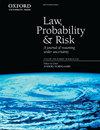Markets vs. Regulation: Investor Protection in the U.S. Compared to Israel
IF 2.7
4区 社会学
Q1 LAW
引用次数: 0
Abstract
In this book chapter, I show that, while the U.S. systems relies on factors that are not determined by regulation, which I call market forces, to shape sophisticated investor protection standards, Israel prescribes such arrangements by the heavy hand of the regulator. I substantiate my argument by comparing these two jurisdictions’ approach to major mechanisms that aim to protect public investors through monitoring and bonding. Section II describes their different approach to the duty of care and to regulating related party transactions and Section III turns to apply such differences to executive and director compensation arrangements. Section IV describes their significant discrepancies related to public shareholder power to propose, appoint and remove directors and Section V describes how their similar objectives toward director independence standards have evolved quite differently and affected the success of initiatives to enhance board independence through changes to board composition. Section VI discusses striking disparities in how these two systems aim to protect investors against controlling minority shareholders, and Section VII concludes.市场与监管:美国与以色列的投资者保护
在本书的这一章中,我表明,美国的制度依赖于不受监管决定的因素,我称之为市场力量,来塑造复杂的投资者保护标准,而以色列则通过监管机构的高压手段来规定这种安排。我将这两个司法管辖区的做法与旨在通过监督和担保保护公众投资者的主要机制进行比较,以此来证实我的论点。第二节描述了他们对注意义务和监管关联方交易的不同做法,第三节转而将这种差异应用于执行和董事薪酬安排。第四节描述了它们在公共股东提名、任命和罢免董事的权力方面的重大差异,第五节描述了它们在董事独立标准方面的相似目标如何演变得截然不同,并影响了通过改变董事会组成来增强董事会独立性的举措的成功。第六节讨论了这两种制度在如何保护投资者免受控股少数股东侵害方面的显著差异,第七节得出结论。
本文章由计算机程序翻译,如有差异,请以英文原文为准。
求助全文
约1分钟内获得全文
求助全文
来源期刊

Law Probability & Risk
MATHEMATICSSTATISTICS & PROBABILITY&-STATISTICS & PROBABILITY
CiteScore
2.10
自引率
28.60%
发文量
8
期刊介绍:
Law, Probability & Risk is a fully refereed journal which publishes papers dealing with topics on the interface of law and probabilistic reasoning. These are interpreted broadly to include aspects relevant to the interpretation of scientific evidence, the assessment of uncertainty and the assessment of risk. The readership includes academic lawyers, mathematicians, statisticians and social scientists with interests in quantitative reasoning.
The primary objective of the journal is to cover issues in law, which have a scientific element, with an emphasis on statistical and probabilistic issues and the assessment of risk.
Examples of topics which may be covered include communications law, computers and the law, environmental law, law and medicine, regulatory law for science and technology, identification problems (such as DNA but including other materials), sampling issues (drugs, computer pornography, fraud), offender profiling, credit scoring, risk assessment, the role of statistics and probability in drafting legislation, the assessment of competing theories of evidence (possibly with a view to forming an optimal combination of them). In addition, a whole new area is emerging in the application of computers to medicine and other safety-critical areas. New legislation is required to define the responsibility of computer experts who develop software for tackling these safety-critical problems.
 求助内容:
求助内容: 应助结果提醒方式:
应助结果提醒方式:


